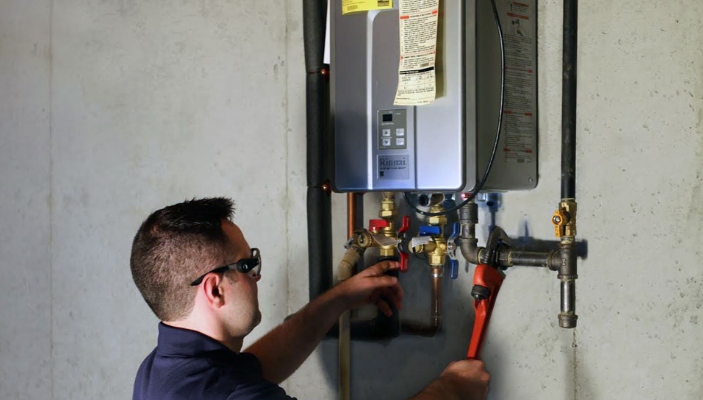What're your opinions concerning How to Maintain Your Water Heater & Prolong its Life?

Hot water is vital for day-to-day convenience, whether it's for a rejuvenating shower or cleaning meals. To guarantee your warm water system runs efficiently and lasts longer, routine maintenance is essential. This post gives sensible suggestions and insights on just how to keep your home's warm water system to avoid disturbances and expensive fixings.
Intro
Maintaining your home's warm water system might appear overwhelming, however with a couple of straightforward actions, you can ensure it runs smoothly for several years to come. This overview covers everything from understanding your warm water system to DIY upkeep tips and understanding when to hire specialist aid.
Significance of Keeping Your Hot Water System
Normal maintenance not just extends the life expectancy of your warm water system however additionally ensures it runs efficiently. Ignoring upkeep can cause decreased effectiveness, greater energy expenses, and also premature failure of the system.
Signs Your Hot Water System Demands Maintenance
Understanding when your warm water system needs interest can protect against major problems. Look out for signs such as irregular water temperature level, unusual noises from the heater, or rustic water.
Recognizing Your Hot Water System
Prior to diving into maintenance jobs, it's practical to recognize the basic elements of your hot water system. Normally, this consists of the water heater itself, pipelines, anode rods, and temperature controls.
Month-to-month Maintenance Tasks
Routine month-to-month checks can aid capture minor issues prior to they escalate.
Flushing the Hot Water Heater
Purging your water heater gets rid of sediment accumulation, improving effectiveness and lengthening its life.
Monitoring and Replacing Anode Rods
Anode rods stop deterioration inside the container. Inspecting and replacing them when worn out is important.
Checking and Readjusting Temperature Setups
Changing the temperature level setups makes certain optimal efficiency and safety and security.
Do It Yourself Tips for Upkeep
You can perform several maintenance tasks yourself to maintain your warm water system in leading problem.
Looking for Leakages
Regularly inspect pipelines and links for leaks, as these can result in water damage and higher bills.
Evaluating Pressure Relief Valves
Evaluating the pressure relief valve guarantees it functions appropriately and protects against too much pressure buildup.
Shielding Pipelines
Protecting hot water pipes lowers heat loss and can conserve power.
When to Call an Expert
While DIY upkeep is valuable, some problems need specialist experience.
Facility Problems Requiring Specialist Assistance
Examples include major leaks, electric issues, or if your water heater is continually underperforming.
Routine Professional Maintenance Conveniences
Expert maintenance can consist of extensive inspections, tune-ups, and making certain conformity with security standards.
Final thought
Regular upkeep of your home's hot water system is essential for effectiveness, durability, and price savings. By following these ideas and knowing when to look for professional assistance, you can make sure a dependable supply of warm water without unexpected disturbances.
How to Maintain an Instant Hot Water Heater
Before tinkering with your hot water heater, make sure that it’s not powered on. You also have to turn off the main circuit breaker and shut off the main gas line to prevent accidents. Also turn off the water valves connected to your unit to prevent water from flowing into and out of the appliance. 2. When you’re done, you have to detach the purge valves’ caps. These look like the letter “T†and are situated on either side of the water valves. Doing so will release any pressure that has accumulated inside the valves while at the same time avoid hot water from shooting out and burning your skin. 3. When the purge valves’ caps are removed, you have to connect your hosing lines to the valves. Your unit should have come with three hoses but if it didn’t, you can purchase these things from any hardware or home repair shops. You can also get them from retail stores that sell water heating systems. Read the user’s manual and follow it to complete this task properly. When the hosing lines are connected, open the purge port’s valves. 4. You should never use harsh chemical cleaners or solutions when cleaning your unit. Make use of white vinegar instead. It should be undiluted and you’ll probably use about 2 gallons. 5. Now flush your water heater. This task should probably take about 40 minutes. We can’t give you specific directions for this because the procedure is carried out depending on the type, model and brand of your heater. With that being said, refer to the user’s manual. 6. When you’re done draining the unit, you have to turn off the purge port valves again. Remove the hosing lines that you earlier installed on each of the water valves. Put the valve caps (purge port) back in their respective places and be very careful so as not to damage the rubber discs that are found inside these caps. 7. Now that everything’s back in place, check your user’s manual again to find out how to reactivate your water heating system. 8. Once it is working, turn one of your hot water faucets on just to let air pass through the heater’s water supply pipes. Leave the tap on until water flows smoothly out of it. https://www.orrplumbing.com/blog/2014/september/how-to-maintain-an-instant-hot-water-heater/

Hopefully you enjoyed reading our part about Tips on Maintaining a Water Heater. Many thanks for taking time to read through our blog. Be sure to take the time to distribute this entry if you liked it. Thanks a lot for being here. Come back soon.
Call Today